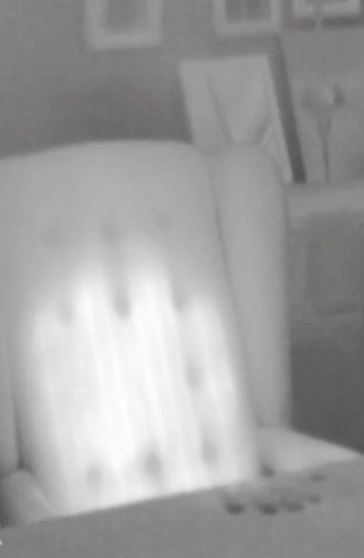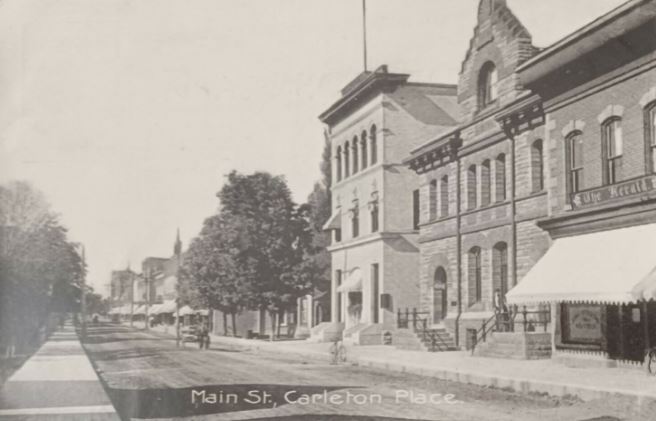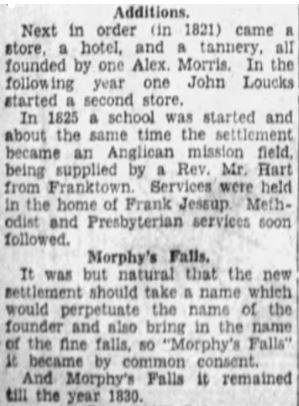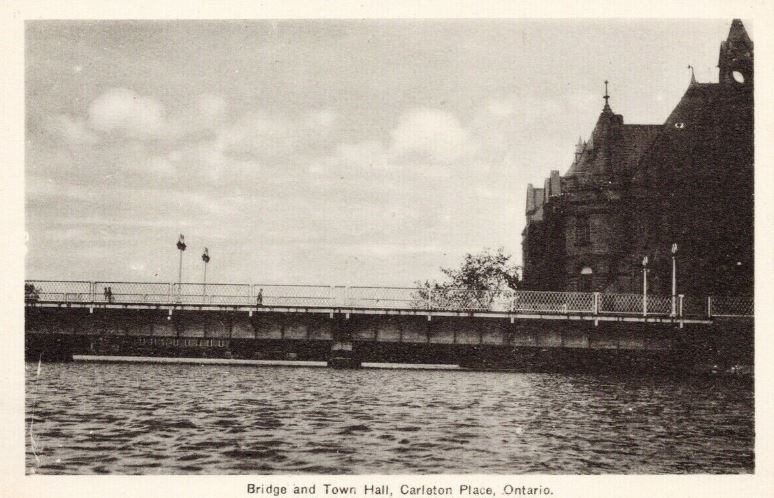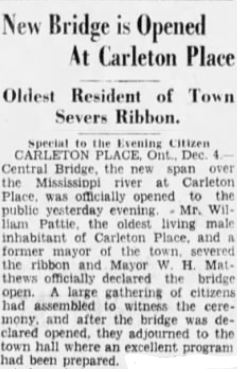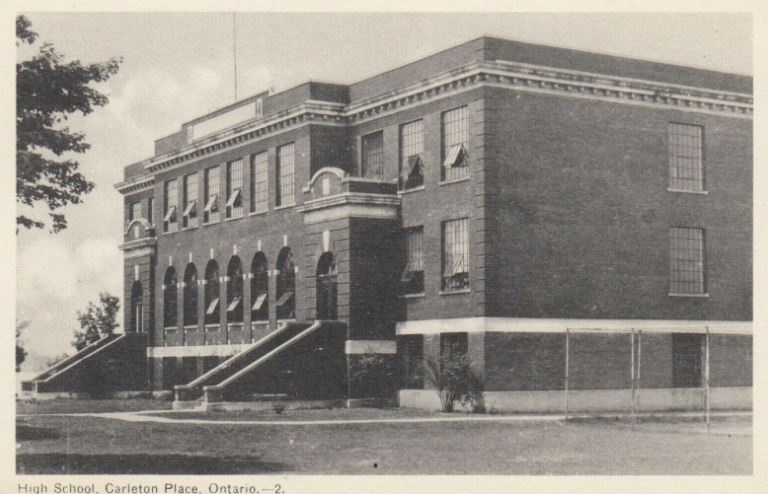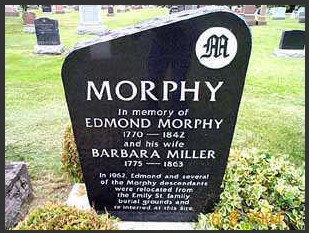When a team of analysts from the Ottawa Paranormal Research and Investigations (OPRI), paid a visit to Carleton Place’s ‘Moore House’, in January of 2013, they had no idea what to expect.
For many years there had been rumours and gossip, stories of ghostly sounds, objects moving, sudden changes in temperature, and a long list of other sightings and events that caused the team of investigators to visit this historic place.
Moore Family
The Moore family home was built in 1850, by a settler from Ireland, Nathanial Moore, and his wife, Margaret Pearson. They had four children: William, James, Jayne Ann ‘Rossie’, and Richard.
James, the second eldest son, and his wife, Catherine Roberts, inherited the home from his parents, and in turn, raised their own children there.
James and Catherine Moore, had a family of five: Nathaniel, born in 1875, John in 1876, a daughter Ida Louise in 1879, another girl, Clara in 1882, and a son, Ernest in 1885.
The photo above shows the section of the Moore family house which was converted to a small general store, known as, JP Moore Groceries and Confectionery. This photo is from the late 1800s.
(left to right – James Moore, his sons, Ernest, Herbert, daughter Ida, wife Catherine, and daughter, Clara)
The Moore’s third child, Ida Louise, was not only lovely, but was also a gifted musician, and became known for her technically impressive performances on the piano.
photo of Ida Louise Moore –
Carleton Place & Beckwith Heritage Museum
Local lore says that Ida’s talent was well worth pursuing in a professional capacity, and that she had planned to attend music school, and either perform professionally, or possibly teach music one day.
Ida’s Death
In a sad twist of fate, the promising young musician caught tuberculosis, and became quite ill. Eventually, in 1900, at the tender age of 20, Ida passed away. It was said that the whole town mourned at the loss of such a lovely young lady, and one with so much promise for a bright future. With heavy hearts her parents, James and Catherine found a lovely plot, under some tall shade trees, at St. James Anglican Cemetery, just north of Carleton Place.
St. James Anglican Cemetery
Moore family headstone, St. James Anglican Cemetery, Carleton Place
Spooky Store
Eventually, the Moore family sold the home, and the new owners continued to operate the small general store. It was after the building changed hands that the strange and unexplained events began to take place.
Reports of unusual sounds and changes in temperature at the store began to make the rounds, up and down the streets of Carleton Place. There were stories of sudden drafts, and of windows opening and closing on their own, the radio also turned off and on by itself, and footsteps were heard, even when no one was in the building. Many employees refused to work alone in the building, and eventually it became difficult to find people who would agree to work there at all.
Paranormal Investigation
In 2013, when the Ottawa Paranormal Research and Investigations team members conducted their research at the Moore House, their three-hour term of analysis included numerous video and audio recordings designed to detect electronic voice phenomenon (EVP) and other indications of paranormal activity. Their equipment included: electromagnetic field (EMF) meters, thermal imagers, video cameras fitted with infrared and night vision, spirit boxes, computers, and smartphones.
What Did They Find?
The team returned to the Moore house in July of 2013, to discuss their findings. Present at the meeting were Chamber staff, members of the media, a Moore family descendant, Frances Moore, and her partner Jim Smithson.
The first piece of evidence shown to the group was a video clip, taken in the loft at the beginning of the investigation on Jan. 13. Analysts John Moore (no relation), and OPRI Psychic, Craig Leafloor, were conducting the initial walk-through.
Thermal Image
One of the research team revealed a thermal image captured by using the thermal imaging camera.
“That chair should not be white,” he explained. “That is heat.” “No one had sat in that chair, but you can clearly see the legs and torso.”
It was a bit of a surprise, and quite strange to have a heat signature showing up in a chair that no one is sitting in; especially white hot like that.
Electrical Interference
At one point during the evening, their recording picked up what sounded like electrical interference.
“Usually, if we get electrical interference, we get it multiple times, it comes in intervals,” he said. “You do not hear it once in a three-hour recording.” The noise can be heard beneath the voice of an investigator.
The Sound
of Music
Knowing that Ida was an accomplished pianist, the team attempted to make contact with her using an electric keyboard , as a trigger object.
Using a spirit box, one of the researchers asked, “Ida, what instrument do you like to play?”
Spirit Box
After a brief pause, a noise came from the keyboard.
According to the researchers everyone heard the noise, and the keyboard was not plugged in at the time.
A Gentleman?
The research team also revealed that just before everyone heard the keyboard, two voices were also heard in the room – a male and a female.
Two separate pieces of equipment recorded the voices, and the word, “No” is said by the male voice, followed by a “Yes”, from the female voice.
In an interview with the “Canadian Gazette”, the research team concluded that the spirit of Ida was still in the Moore house, along with a gentleman’s presence.
Moore house in more modern times, 170 Bridge Street, Carleton Place
House was Moved
The Moore house was originally built at the north end of Moore Street, opposite Lansdowne Avenue. The building was donated to the town, and in 2007, the structure was raised from its foundation and moved to 170 Bridge St. The building is currently the site of the Carleton Place & District Chamber Of Commerce and Visitor Centre.
According to some family members, the Moore family were “known to have the sixth sense, an ability to perceive the unseen world of angels, ghosts, heaven, auras, etc.”
Local residents say that a realtor, Walter Renwick, owned the property for many years, and that members of his family reported unusual things upstairs where their bedrooms were located. They reported objects moving, breezes flowing through rooms when the windows were closed, and a strong scent of lavender from time to time. It’s also been said that the day Renwick sold the home, a framed photo he had of the house fell to the floor and shattered into pieces.
Lavender
Some paranormal researchers claim that the scent of lavender is one of the signs of a friendly spirit. Down through the ages we’ve come to know that lavender symbolizes purity, faith, and love; and for a certain young lady living in Carleton Place so many years ago, it may very well have been a favourite.
Today, Moore House is the bright, welcoming Carleton Place Visitor Centre and the Carleton Place & District Chamber of Commerce.
Are there still spirits at Moore House? Why not go and see for yourself!
photo: Carleton Place Chamber of Commerce
.
Arlene Stafford-Wilson
Honorary Life Member, Lanark County Genealogical Society,
Member, Association of Professional Genealogists, APG
Author of:, “Lanark County Christmas”, “Lanark County Comfort”, “Lanark County Collection”, “Lanark County Calling”, “Lanark County Classics”, “Lanark County Connections”, “Lanark County Calendar”, “Lanark County Chronicle”, “Lanark County Kid”, and “Recipes & Recollections”





